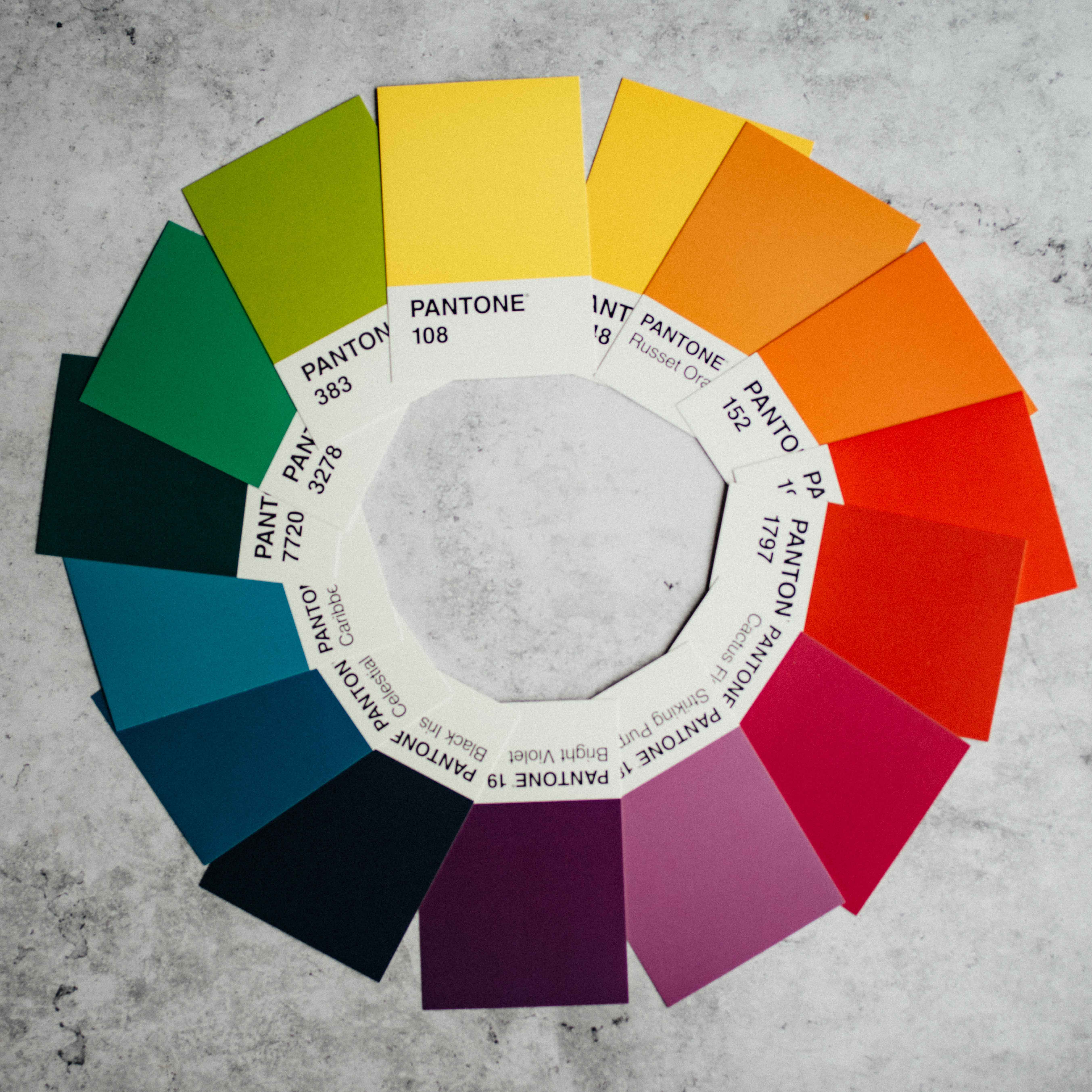In a previous article, I introduced basic color concepts, color theory, color wheel, How to get a Harmonious Color Palette every time, as well as Free Digital Tools to develop your own color schemes. I then promised my readers a blog post about how they can develop their own color schemes in a traditional painting style. This article is for those who are intimidated by color or not very sure how to use it. I’m going to guide you through exploring color in acrylic paint and how you can mix your own colors. I am hoping that this article will give you a bit more confidence in color use, so let’s get started!
This page contains affiliate links, meaning I earn a commission if you use those links. Please read my Disclosure for more details.

The materials you will need for this
- Some paint: I choose acrylics because they are affordable and easy to work with. You will need three colors: blue, red, and yellow + black and white to mix them with. Which Art Paint is best? Acrylics, Oils, Encaustic…
- Some paintbrushes of course. How to know the right Paintbrush to pick as an artist?
- A palette knife
- A color wheel
- Paint paper
- A palette to mix your paint
- Paper towels
- Water goblet
Understanding how to mix color based on the color wheel
I have talked about this in-depth in this article. But here’s a bit of a summary to keep you on track:
To mix colors on the color wheel, you can use the following guidelines:
- Mixing primary colors: When you mix two primary colors, you get a secondary color. For example, mixing red and blue creates purple, mixing blue and yellow creates green, and mixing red and yellow creates orange.
- Mixing secondary colors: When you mix two secondary colors, you get a tertiary color. For example, mixing orange and green creates yellow-green, mixing green and violet creates blue-green, and mixing violet and orange creates red-violet.
- Mixing primary and secondary colors: When you mix a primary color with a secondary color, you get a tertiary color. The resulting color will depend on which primary and secondary colors you mix. For example, mixing red and orange creates red-orange, mixing blue and green creates blue-green, and mixing yellow and violet creates yellow-violet.
- Complementary colors: Complementary colors are located directly opposite each other on the color wheel. When you mix complementary colors, they create a neutral or muted color. For example, mixing red and green creates a brownish color, mixing blue and orange creates a grayish color and mixing yellow and violet creates a beige color.
Remember that the intensity of the colors you mix will depend on the amount of each color you use. Experiment with different ratios of colors to achieve the desired hue and intensity.
The steps to create your own color schemes with physical paint
- Choose your base color: Select a base color for your scheme. This can be any color you like, but it’s usually best to choose a color that you really like and that you feel will be versatile enough to use in different ways.
- Choose your complimentary colors: Look for colors that complement your base color. For example, if your base color is blue, you could choose complementary colors like orange or yellow. You can also experiment with different shades and tints of these colors.
- Mix your paint: Use your palette and paintbrushes to mix your paint colors until you have achieved the colors you want. Start by mixing your base color with your first complementary color, and then experiment with adding in other colors to create different shades and tints.
- Test your colors: Test your colors on a piece of paper or canvas to see how they look together. If you’re happy with the results, you can start using your color scheme in your painting or project.
- Adjust as needed: If you’re not happy with how your colors look, you can always adjust them by adding more of one color or another or by mixing in a different color altogether.
That’s it! With these simple steps, you can create your color schemes using physical paint.
Conclusion
In my next article, I will share with you five fun exercises to practice creating color schemes. Enjoy creating!


3 Comments